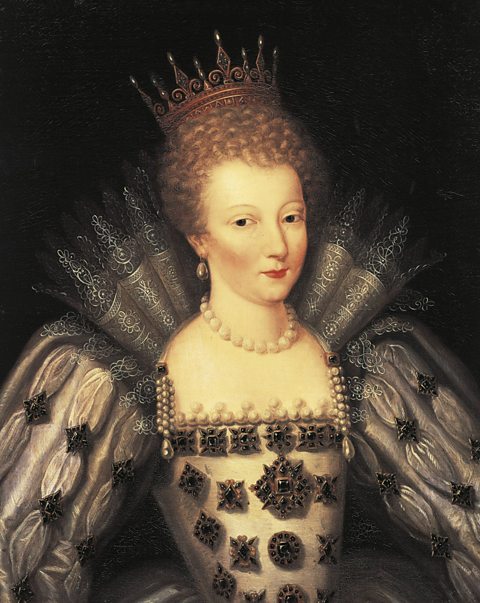The role of Mary, Queen of Scots
Mary’s early life
The Catholic threat undoubtedly revolved around Elizabeth’s cousin, Mary, Queen of Scots. She had become Queen of Scotland when her father, James V, was killed in battle against the English in 1542.
In 1561, Mary’s first husband (Francis II of France) died, so she returned to Scotland.
In 1565, she married Henry Stuart (Lord Darnley), but the marriage was unhappy. Darnley turned out to be a drunken lout who was involved in the murder of Mary’s secretary, David Rizzio.
In 1567, Darnley was himself murdered, and the finger of suspicion pointed at Mary, forcing her eventual abdication, and then exile from Scotland, in favour of her infant son, James.
Key events in the life of Mary, Queen of Scots
Mary’s arrival in England
Mary’s arrival in England posed a great problem for Elizabeth. It was mainly because of her claim to the throne, because some Catholics viewed Elizabeth as illegitimate, being the product of Henry’s second marriage.
When Mary arrived in England seeking refuge in 1568, none of Elizabeth’s options had a particularly favourable outcome.
- Getting Mary out of the country – sending Mary back to Scotland or France could backfire, allowing her to gather more support to challenge Elizabeth.
- Keeping Mary imprisoned – this would reduce the risk of Mary gathering more support back in Scotland or France and allow Elizabeth to keep tight control. But unlawfully imprisoning Mary could provoke international outcry and attacks anyway.
- Executing Mary – whilst this would remove the figurehead for CatholicThe Church in Western Europe before the Reformation. The Pope was head of the Church. A member of the Roman Catholic Church. challengers, it could also provoke international attacks and set a precedent for killing a queen.
In the end Elizabeth decided to allow Mary to remain in England, but as royal prisoner in ‘honourable captivity’. She was kept in custody but treated with the respect due to a queen.
Catholic plotting against Elizabeth

As has been previously described, Mary became the focal point, intentionally or otherwise, of Catholic plotting against Elizabeth.
It was her proven involvement in the Babington Plot of 1586 that would lead to her downfall. The evidence provided by Walsingham now seemed to be enough to convict Mary of plotting Elizabeth’s death.
At trial, Mary defended herself strongly, whilst refusing to accept the court’s authority. However, Elizabeth reluctantly agreed to sign her death warrant and Mary was executed in February 1587.
When Elizabeth heard of her death she was very upset and William Davison, a junior Secretary of State, was imprisoned for misunderstanding her orders.
However, there is little doubt that a major threat to Elizabeth had been removed.
The consequences of Mary’s execution
Surprisingly, as it turned out, the consequences of Mary’s execution were not as serious as Elizabeth may have feared.
- France – fearing the might of Spain, they wanted to maintain their allianceA union formed for mutual benefit, especially between countries. with England.
- Spain – were already at war with England due to the action of the 'Sea DogsEnglish pirates commonly involved in attacks on Spain.' and events in the Netherlands.
- Scotland – King James VI was on the throne of Scotland, he was Elizabeth’s heir and so he took no action.
- English Catholics – remained loyal to Elizabeth.